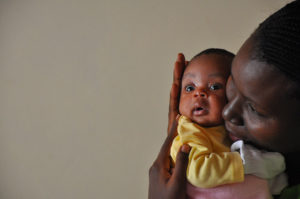Mothers form a significant part in the lives of their children, families and society. Improvement of maternal health was one of the eight important aims of the Millennium Development goals (MDGs) (a set of targets established to meet the needs of the world’s poorest by 2015). To build upon and carry on the momentum generated by the MDGs, a post-2015 agenda has been produced which is referred to as the Sustainable Development Goals (SDGs). The SDGs consists of 17 goals to ‘Transform Our World’ by 2030, one of which is related to maternal health.
Maternal mortality has fallen by almost 50% since 1990, with Eastern Asia, Northern Africa and Southern Asia seeing a decline of around two thirds. Despite the declines reported, maternal mortality is still unacceptably high with 99% of maternal deaths occurring in low and middle income countries.

It is reported that around 830 women die from preventable causes related to pregnancy and childbirth each day. The major complications that account for nearly 75% of all maternal deaths include high blood pressure during pregnancy (pre-eclampsia and eclampsia), severe bleeding, infections, complications from delivery and unsafe abortion. Pre-eclampsia occurs in 2% to 8% of all pregnancies and has been found to be a leading cause of maternal and perinatal morbidity and mortality and yet the majority of cases could be avoided if women received timely and effective care, delivered according to evidence-based standards.
From 1990-2015 maternal mortality declined from 385 to 216 deaths per 100,000 live births. As part of the SDGs, the target is to further reduce the global maternal mortality ratio to less than 70 per 100,000 live births. Adolescent pregnancy remains a major contributor to maternal and child mortality. Globally, it has been found that complications linked to pregnancy and childbirth are the second leading cause of death, suicide being the first, amongst girls aged 15-19 years old. This risk is highest for those under the age of 15. One of the specific health SDG targets is to ensure the provision of and universal access to sexual and reproductive health-care services including family planning, education, and the integration of reproductive health in national strategies and programmes. Although it is known that adolescents have an increased risk for poor maternal and infant outcomes, there are a limited number of studies published in the area of adolescent utilisation of critical maternal health services. The reasons for this are not clear although it could potentially be due to challenges with collecting data from this cohort. Banke-Thomas and colleagues report the need for more robust evidence on use of maternal health services by adolescents and the need to improving education and removing financial barriers to their access to care.

In 2015, it was reported that the maternal mortality ratio was 239 per 100,000 live births in low and middle income countries, almost 20 times higher than that of high income countries where the figure is 12 per 100,000 live births. The high number of maternal deaths seen in certain locations reflects the inequities present with regards to access to health services, and highlights the gap between rich and poor. Disparities exist between and within countries as well as between those on high versus low incomes and those living in rural versus urban regions. It is also documented that there are disparities in maternal health outcomes for women who are immigrants.
Increasing institutional births rates and improvement in the access to comprehensive emergency obstetric care and medical assistance are central approaches to reducing maternal and neonatal deaths globally. Findings by Maru and colleagues, showed that individuals opting for home births instead of an institutional delivery service in Nepal, may not necessarily be doing so due to patient preference, but instead it could be as a result of socioeconomic vulnerability to structural barriers.
With the advancements in science, technology and medicine, healthcare solutions to prevent or manage pregnancy related complications are well known thus making most maternal deaths preventable through the provision of timely and effective care.

It is clear that more needs to be done to reduce maternal morbidity and mortality. This includes addressing issues related to barrier to healthcare and medical provision, equal treatment of people regardless of ethnicity, backgrounds and age, as well as ensuring equitable access for the most vulnerable girls and women to health services. Violence and discrimination against women are factors which must also be tackled to ensure maternal mortality is reduced.
So this mother’s day, celebrate motherhood and support improvements to maternal health, for the world would not be the same without the strength of these special women.
If you are interested in reading more on this topic, please visit the BMC Pregnancy and Childbirth website. The following are a few of the interesting picks and recent publications in the journal:
Maternal health services
Maternal health, morbidity and mortality
Measuring maternal mortality using a Reproductive Age Mortality Study (RAMOS)
Antepartum complications and perinatal mortality in rural Bangladesh
Adolescents
Comments